

How to retain the Gen Z users (and what every fintech app needs to know)
How to retain the Gen Z users (and what every fintech app needs to know)
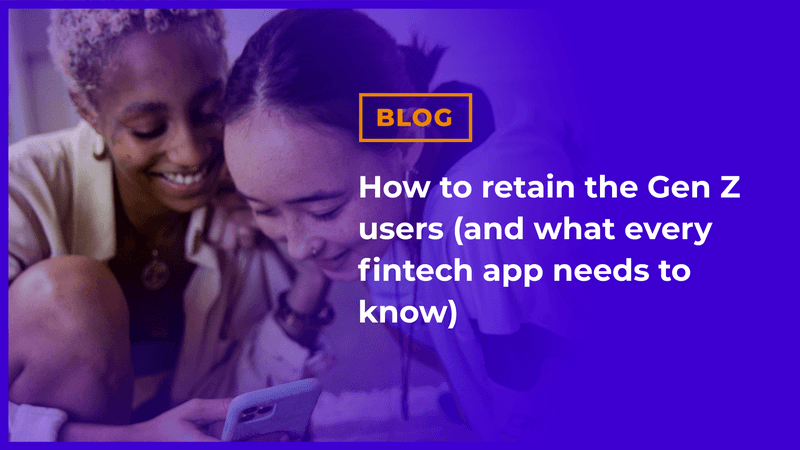
This image sets the stage for our discussion on retaining Gen Z users in the competitive fintech landscape, emphasizing the digital-native audience.
Across banking and fintech, figuring out how to increase app retention can be a challenge - especially if you’re targeting young people, the so-called ‘digital natives’ who grew up with video games and the internet. But there are ways that fintech apps can improve user retention, and the best in the sector have already figured it out. The answer is gamification! Take Revolut, who implemented gamification examples like a leaderboard to encourage university students to open an account.
In this article, we will discuss the behavior of Gen Z, those aged 9-24, and how it is affecting fintech, as well as how gamification examples can help crack user retention!
- Why young people are important for fintech apps (and how to retain them)
- Gamification examples that can boost user retention
- Challenges: Ikano Bank and the mini-game played by 1.5 million
- Leaderboards: Qapital helps users save as a team
- Points system: BBVA makes financial education fun
- Personalized notifications: How Moven makes users 50% more likely to save
- Recap
Why young people are important for fintech apps (and how to retain them)
Today, 13 to 24-year-olds spend more than double the time using mobile apps each day than those over 45. Given their activity, it should be no wonder then that Gen Z and Millennials are hugely important to digital banks, even if they do not hold the spending power of their older counterparts. As of today, younger people make up the biggest share of both new and existing fintech users, and by quite a difference.
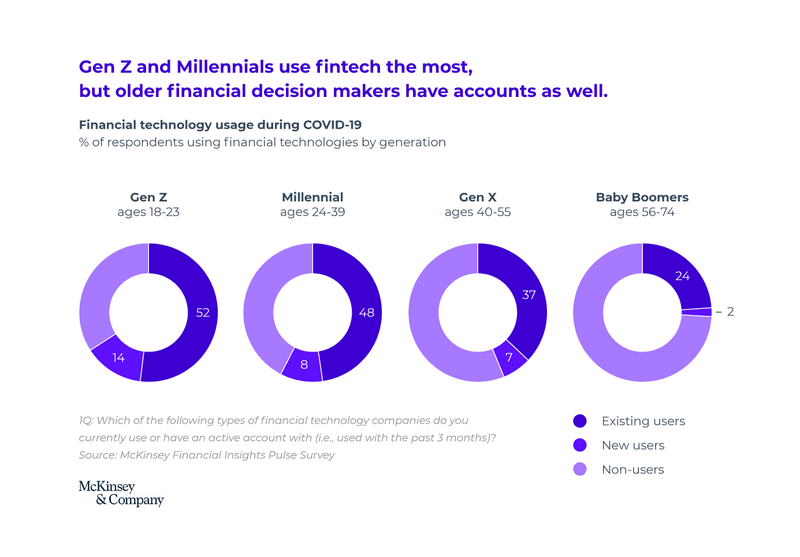
The chart clearly shows that younger generations, including Gen Z, form the largest segment of fintech users, making their retention critical for growth.
Combine that with user retention and things look positive. In 2020, fintech had the best retention rate of any vertical. But that’s no reason for complacency - Day 30 retention still sits at a low 12%. So what’s happening? What does it mean that there is high sector growth in young people, but low app retention? For one, that Gen Z wants what fintech has to offer! But on the other hand, that they also give up on new apps pretty quickly.
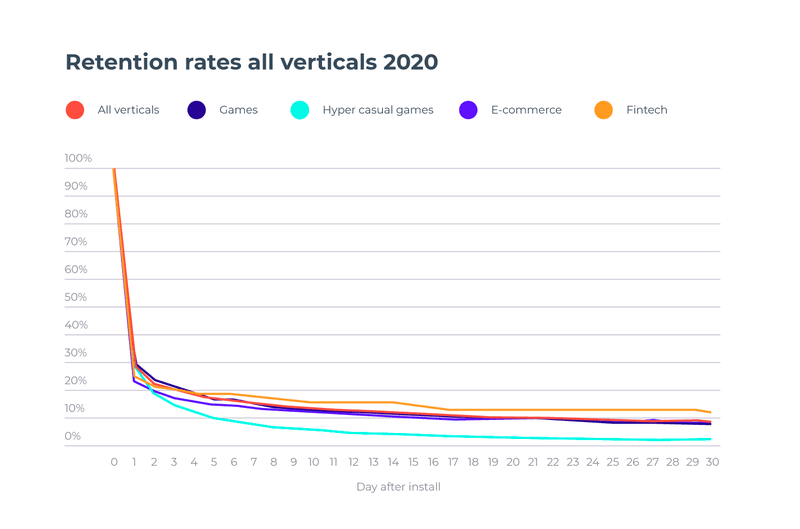
This graph highlights fintech's leading position in app retention compared to other industries, while also showing room for improvement in long-term engagement.
Low user retention in young people is bad news for many reasons - but none more pressing than what lies behind the fact that most Gen Z members trust their family and friends' recommendations the most. The reality is that nearly 1 in 3 young people will not purchase a product or service without being personally advised by a friend! Compare that to those aged between 57 and 75, who prefer to rely on written and video content for recommendations. In brief, retaining your young users is a matter of future growth.
A common cause for user churn is a poor user experience. In the digital world, young consumers are clever and know what’s good and what’s not - this isn’t their first rodeo! In fintech, young users expect things like free accounts, 24/7 support, and a customer-centric design, with features such as built-in savings tools or expense sheets. But these alone are not enough, to retain users you need to create a truly motivating experience.
Increase user retention by uplifting the experience with fun elements. Check out our app gamification software!
But how do fintech apps create a motivating experience for young users? According to the OECD, the answer is gamification! The OECD, a club of developed countries, produces economic reports that are highly regarded, and in a report entitled ‘Advancing the Digital Financial Inclusion of Youth’, it is written:
OECD, 2020 - "Technology can be used to enhance digital and smart communication (such as social media, gamification, personalisation or interactivity) and lead to higher consumer engagement."
So let’s see exactly what gamification means and some great use cases in fintech.
Gamification examples that can crack user retention
In brief, gamification is the use of game-like elements in a non-game context. Gamification examples could be a badge reward system or examples of personalization like custom user avatars. These features inspired by games are extremely familiar to nearly every young person - in the US 93% of 6-8 year olds already play video games. On top of that, research has found that young consumers had more intention to purchase a gamified product when compared to older customers. The study also says that engagement with a gamified app or service comes down to perceived usefulness.
New to gamification? Get started on our what is gamification page!
So what are some gamification examples and how can they be useful to Gen Z?
Challenges: Ikano Bank and the mini-game played by 1.5 million
Challenges are great in so many ways! For one, they give users a clear purpose within your app. It’s not just a great way to get users started, but it also provides an intrinsic motivation to continue. Research by McKinsey shows that challenges create a flow-like state where people are more productive and motivated. In other words, user retention! The logic behind it is that people are more motivated to work and progress towards a clear goal, rather than completing separate grunt tasks with no real meaning.
In addition, challenges can be a fantastic way to bring people together. When people challenge each other, the positive effects can be multiplied!
Ikano Bank showed the power of challenges when they pit Swedish digital banking users against each other. The time was 2014 and Flappy Bird was the most downloaded app on the App Store. Riding on the game’s popularity, the bank produced a mini-game that challenged users to protect a flying piggy bank and avoid crashing into costly expenses.

Ikano Bank's mini-game demonstrates a creative use of challenges to engage users by tapping into popular culture and creating a viral experience.
During the 21 day campaign, the game garnered over 1.5 million plays! Now that’s a lot of engagement, and it seems especially impressive when you learn that just under 10 million people live in Sweden.
Leaderboards: Qapital helps users save as a team
When US-based fintech app Qapital calls itself ‘the only challenger built on behavioral science’, they mean gamification. The psychology of leaderboards is simple and well established through research - leaderboards provide a picture of a person’s progress, as well as help users make social comparisons between their peers. This, in turn, motivates them to improve and reach the top. So as well as fulfilling the need for competence and growth, leaderboards introduce a fun element of competition.
But while the use of leaderboards is famous in sectors like education or fitness, their use in fintech has to be smarter than simply rating people’s time investment/effort. For sure, Qapital is a great example of how to do it right. Through the app, users can create shared goals such as saving up for a holiday. Here is where gamification works its magic - while progress bars show how far the team is as a whole, a leaderboard ranks users by their individual contributions. This is a subtle and clever way of pushing users to improve their performance when they see others ahead of them. Indeed, leaderboards are found to ‘significantly increase user performance’.
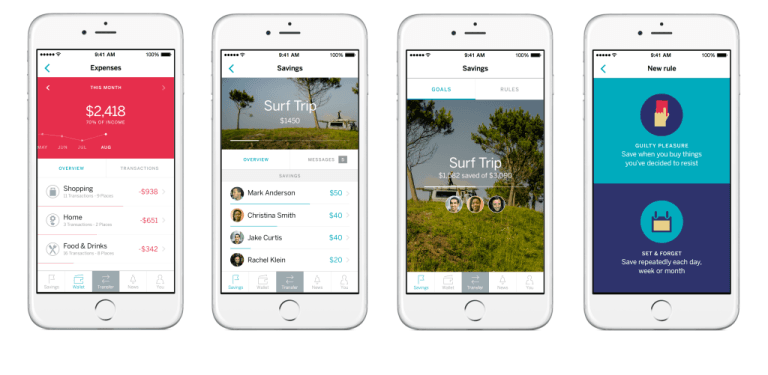
Qapital's app showcases how leaderboards and shared goals can foster a sense of teamwork and competition, driving consistent user engagement with savings.
Their gamification strategy must be working - Qapital has over 1.8 million customers and users have through the app collectively saved $1 billion! What’s more, the average age of a Qapital user is just 27. Compare that to Revolut, whose user is on average 34.
Points system: BBVA makes financial education fun
Points systems are simple and they work wonders! In short, users will stack up points by completing tasks, which can be used to level up or redeemed for prizes. Most importantly, a points system needs to align how you reward users with your goals as a product manager. Finance expert Bjorn Cumps sums this up when he says “a good way to use gamification is to incentivize desired behavior”.
One of the best examples of this in fintech is how the Spanish bank BBVA taught users financial literacy and made it fun! The bank launched BBVA Game, a web app with app tutorials and explanations on how to pay taxes and do transactions online. This fits in with BBVA’s strategy of attracting Gen Z by helping them save. You cannot say they don’t understand their young customers!
In the app, users earn points by completing challenges and can redeem them for music downloads, movies, smartphones, or even tickets for the La Liga football league. After only 6 months the game had over 100,000 users and its users showed an 18% higher satisfaction rate! On the whole, the results were extraordinary:
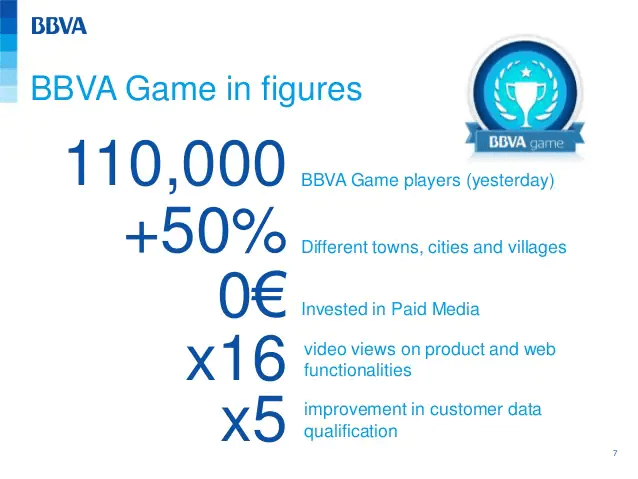
The results from BBVA's gamified financial education program clearly show a significant increase in user engagement and satisfaction across several key metrics.
Personalized notifications: How Moven makes users 50% more likely to save
Personalized notifications use customer data to target the right user with the right offer at the right time. For this reason, personalization is highly effective, although it seems that only younger consumers are happy with the trade-off in privacy. 47% of those aged 55 and up are ‘very concerned' about data privacy, compared to just 28% across Gen Z. The same goes for the Millennials.
Sara Koslinska, CEO of Limitless - "Generation Z doesn’t understand taboos and is completely open to sharing their experiences with finances"
That makes Gen Z a fantastic audience for personalized notifications. Moven is just one fintech taking this gamification example to their advantage. The entire app is built with a contextual experience in mind, meaning that the app actually changes to suit the user’s behavior. For example, Moven will send users personalized notifications reminding them to save money when they are most likely to do so. CEO Brett King notes that upon a repeat notification, users are 50% more likely to save money!
In addition, users are prompted to ‘lock away’ their savings at a time when their spending behavior allows them to do so. A personalized notification gamifies the moment, making it fun and satisfying to save money.
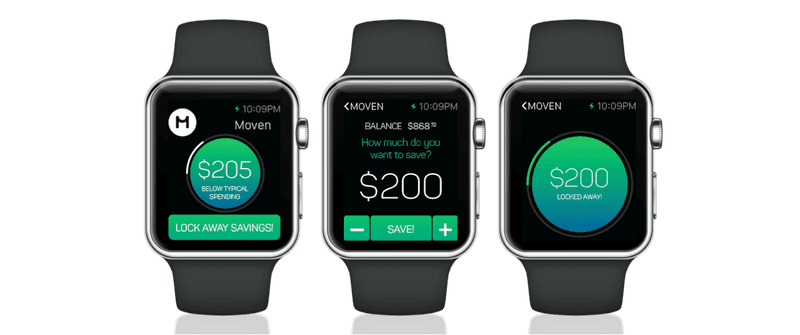
Moven’s Impulse Saving feature illustrates how personalized, timely notifications can gamify the act of saving money, turning a good intention into action.
Moven is one of the great gamification examples that shows you how to achieve user retention in Gen Z!
Want to improve your mobile app experience? Accelerate your growth with an action-packed gamification workshop tailored to your app goals!
Recap
Figuring out how to increase app retention can be a challenge - especially if you’re targeting young people, the generation who grew up with video games and the internet. One of the solutions is gamification.
In this article, we discussed the behavior of Gen Z, those aged 9-24, and how it is affecting fintech, as well as how gamification examples can help crack user retention!
Why young people are important for fintech apps (and how to retain them)
The power of the youth is on the rise. Gen Z makes up the biggest share of both new and existing fintech users, and by quite a difference! Without a doubt, retaining Gen Z is crucial for future fintech growth and here’s why:
- Gen Z spends more than 2x the time using mobile apps daily than those 45+.
- While fintech has the best retention of any sector, Day 30 retention is just 12%.
- Low user retention means fewer customer advocates - and nearly 1 in 3 young people will not purchase a product or service without being recommended it!
- This challenge is unique to Gen Z - compare to those aged between 57 and 75, who prefer to rely on written and video content.
But how do fintech apps create a motivating experience for young users? According to the OECD, an organization of developed countries, the answer is gamification!
OECD, 2020 - "Technology can be used to enhance digital and smart communication (such as social media, gamification, personalisation or interactivity) and lead to higher consumer engagement."
Gamification examples that can crack user retention
In brief, gamification is the use of game-like elements in a non-game context. These features are extremely familiar to nearly every young person - in the US 93% of 6-8 year olds already play video games. On top of that, research has found that young consumers had more intention to purchase a gamified product when compared to older customers.
So what are some gamification examples and how can they be used to retain Gen Z?
Challenges: Ikano Bank and the mini-game played by 1.5 million
Challenges give users a clear purpose within your app. It’s not just a great way to get users started, but it also provides an intrinsic motivation to continue. Research by McKinsey shows that challenges create a flow-like state where people are more productive and motivated. In other words, user retention! The logic behind it is that people are more motivated to work and progress towards a clear goal, rather than completing separate grunt tasks with no real meaning.
Ikano Bank showed the power of challenges when they dared Swedish digital banking to play a mini-game where they had to protect a flying piggy bank and avoid crashing into costly expenses. During the 21 day campaign, the game garnered over 1.5 million plays!
Leaderboards: Qapital helps users save as a team
When US-based fintech app Qapital calls itself ‘the only challenger built on behavioral science’, they mean gamification. The psychology of leaderboards is well studied - leaderboards provide a picture of a person’s progress, as well as help users make social comparisons. This, in turn, motivates them to improve.
In Qapital, users can create shared goals such as saving up for a holiday and a leaderboard ranks users by their individual contributions. This is a subtle and clever way of pushing users to improve their performance when they see others ahead of them. Indeed, leaderboards are found to ‘significantly increase user performance’.
Their gamification strategy must be working - Qapital has over 1.8 million customers and users have through the app collectively saved $1 billion! What’s more, the average age of a Qapital user is just 27. Compare that to Revolut, whose user is on average 34.
Points system: BBVA makes financial education fun
In a points system, users stack up points by completing tasks which can be used to level up or redeemed for prizes. Finance expert Bjorn Cumps sums this up when he says “a good way to use gamification is to incentivize desired behavior”.
One of the best examples of this in fintech is how the Spanish bank BBVA taught users financial literacy and made it fun! The bank launched BBVA Game, a web app with app tutorials and explanations on how to pay taxes and do transactions online. This fits in with BBVA’s strategy of attracting Gen Z by helping them save.
In the app, users earn points by completing challenges and can redeem them for music downloads, smartphones, or even tickets to watch a football match. After only 6 months the app had 100,000+ users and customers showed an 18% higher satisfaction rate!
Personalized notifications: How Moven makes users 50% more likely to save
Personalized notifications use customer data to target the right user with the right offer at the right time. Out of all demographics, Gen Z is the happiest with this. 47% of those aged 55+ are ‘very concerned’ about data privacy, compared to just 28% across Gen Z.
Sara Koslinska, CEO of Limitless - "Generation Z doesn’t understand taboos and is completely open to sharing their experiences with finances"
In Moven, the entire app is built to change to suit the user’s behavior. For example, Moven will send users personalized notifications reminding them to save money when they are most likely to do so. CEO Brett King notes that upon a repeat notification, users are 50% more likely to save money!
In conclusion, that is how you achieve user retention in Gen Z, by helping them to achieve their goals with gamification examples that make the process easier and more fun. In short, providing them with customer value!
Want to improve your mobile app experience? Accelerate your growth with an action-packed gamification workshop tailored to your app goals!
Related Posts
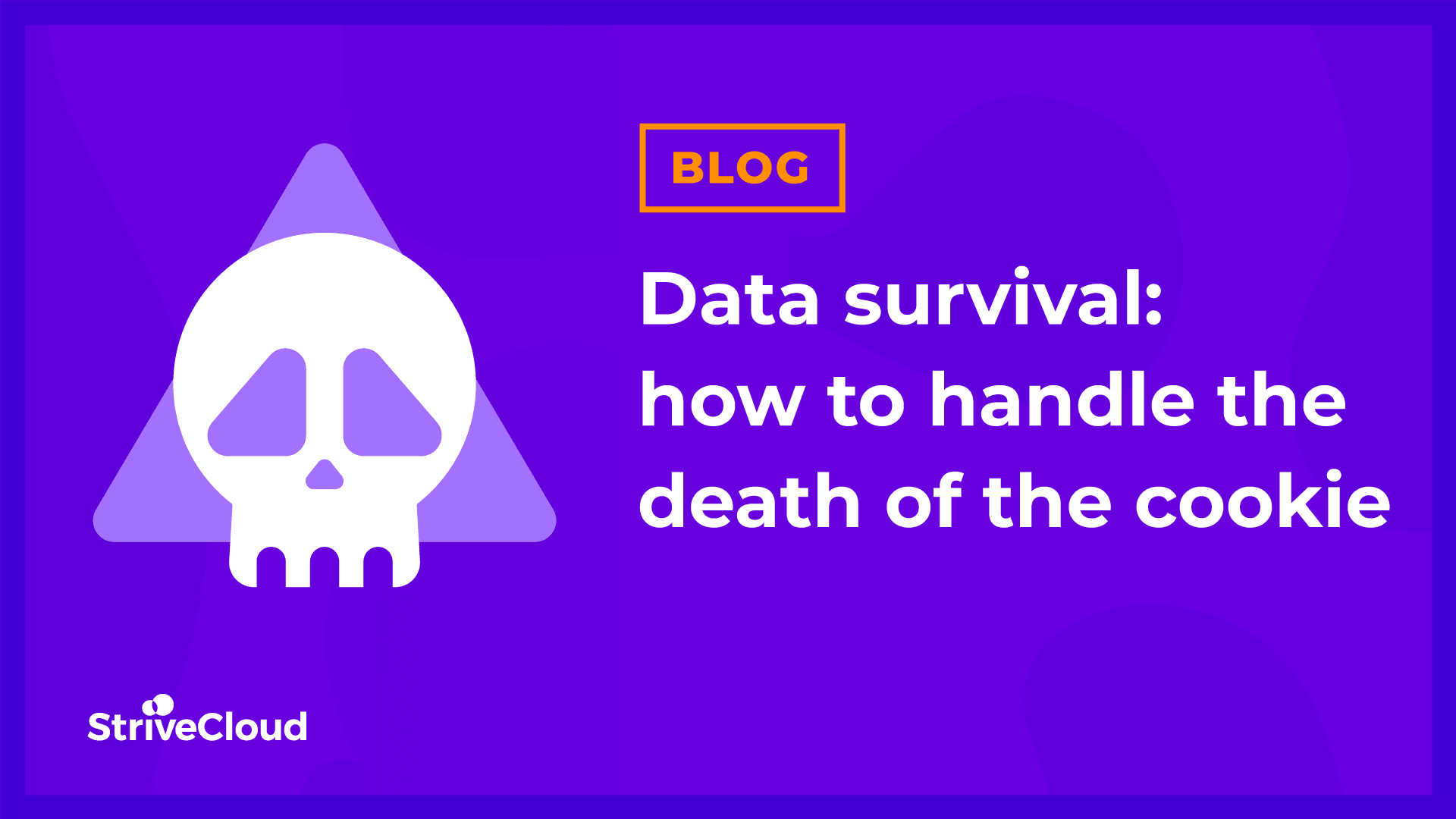
Data survival: how to handle the death of the cookie
In 2021, the largest play in the web browser market Google Chrome will kill third-party cookies. They follow the example of both Safari and Firefox which have already dropped cookies last year. 2021 is the final countdown for marketers! You need to find ways of enriching your data with first-party cookies. So, how do you get your audience to share their data with you? And why should you start collecting first-party data now?
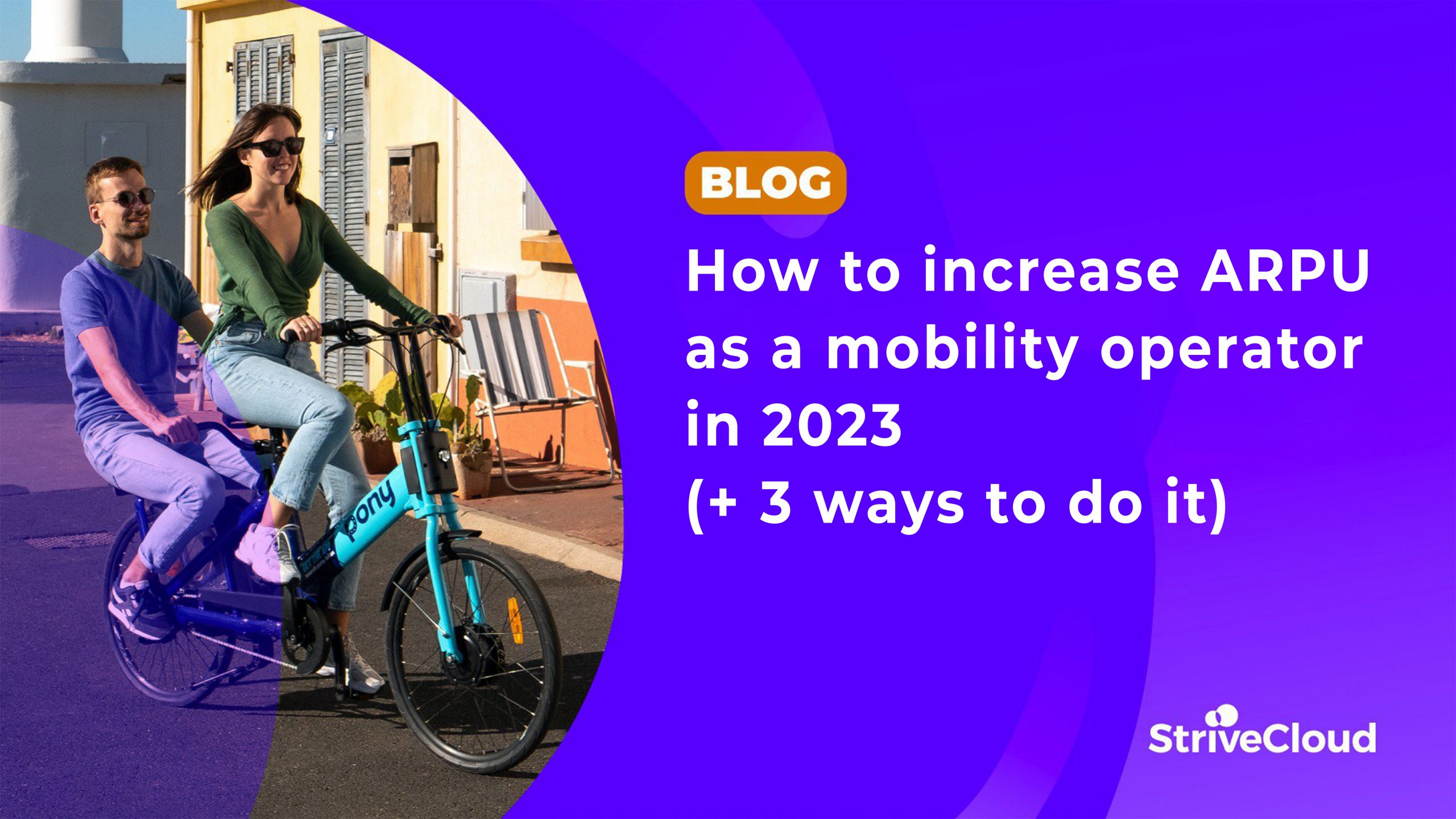
How to increase ARPU as a mobility operator in 2023 (and 3 ways to do it)
When costs are rising and customer acquisition is too competitive, how can micromobility operators grow? The solution is to increase ARPU! An increased average revenue per customer boosts your bottom line, all without spending a cent on customer acquisition. In short, a higher ARPU means greater profitability! In this article, discover 3 ways you can increase ARPU today.

